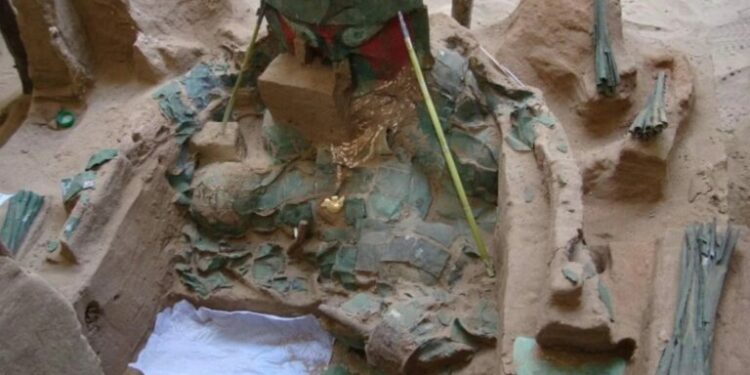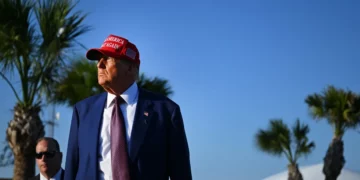A collection of surgical equipment was found in a funeral bundle recovered in a tomb from the Middle Sicán period (900-1050 A.D.) at the Huaca Las Ventanas archaeological site in the Lambayeque area of Peru, indicating the deceased was a surgeon.
It is the first discovery of its kind in Lambayeque or northern Peru.
Archaeologists from the Sicán National Museum discovered funerary bundle No. 77 during a 2010-2011 excavation of Huaca Las Ventanas’ southern necropolis.
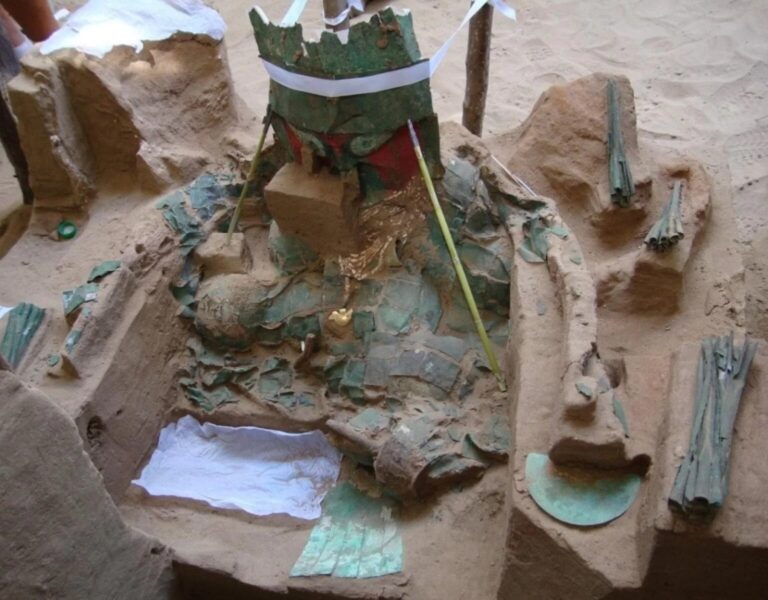
The excavated material was taken to the museum and kept for future excavation. That didn’t happen until much later, a decade later, when the museum received National Geographic Donation Fund funding in 2021, allowing it to study Bundle No. 77 thoroughly.
Between October 2021 and January of this year, the excavation took place. A gold mask painted with cinnabar, a massive bronze pectoral, gilt copper bowls, and a poncho-like robe with copper plates were all contained within the package.
A clay jug with a double spout and a curved bridge handle with a tiny figurine at the top representing the Huaco Rey is found beneath the poncho (Huaco King).
Archaeologists were particularly interested in the surgical set. It’s big, with a complete set of awls, needles, and knives in various sizes and shapes. There are around 50 knives, some of which have only one cutting edge. The majority are arsenic-rich bronze alloys. Some of the handles are made of wood.
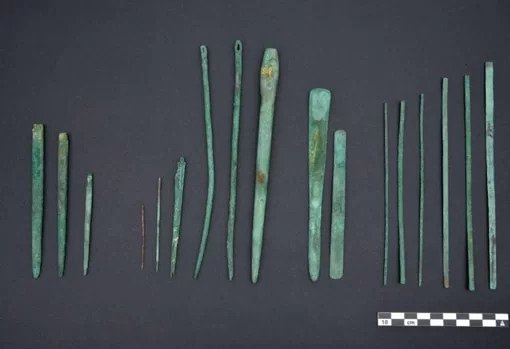
Next to the planchette, two frontal bones, one adult and one juvenile, were discovered. Marks on the bones show that they are sliced with trepanation procedures on purpose. It confirmed that the instruments were designed for surgical usage.
The tools are unique to the area but found a comparable discovery in Paracas in 1929. The tools, on the other hand, are made of various materials. Sharpened volcanic obsidian was used to make the blades of the Paracas set.
“This is the first discovery of this type in Lambayeque and the country’s north.” It is Middle Sicán culturally affiliated and dates from 900 to 1050 after Christ, indicating the level of specialization and expertise.
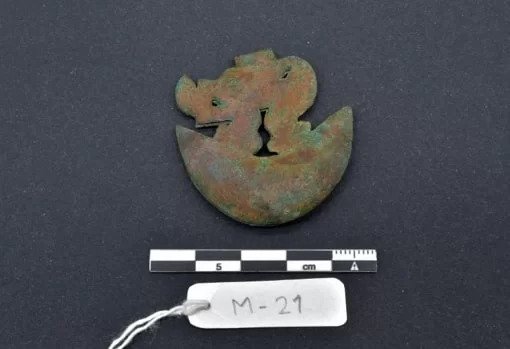
A piece of bark from an unknown species found in the bundle could have been used as an analgesic or anti-inflammatory infusion, similar to how white willow bark is used to make what is essentially aspirin tea.
“We’ll look into it to see what species it came from and what it’s now used for. To compare surgical instruments to Paracas instruments, we need to create a complete typology of surgical instruments.
Some match and some don’t, but what’s intriguing is the instance of Lambaye, where an object always has the auction of the God of the Mask with Closed Eyes present,” he said.

